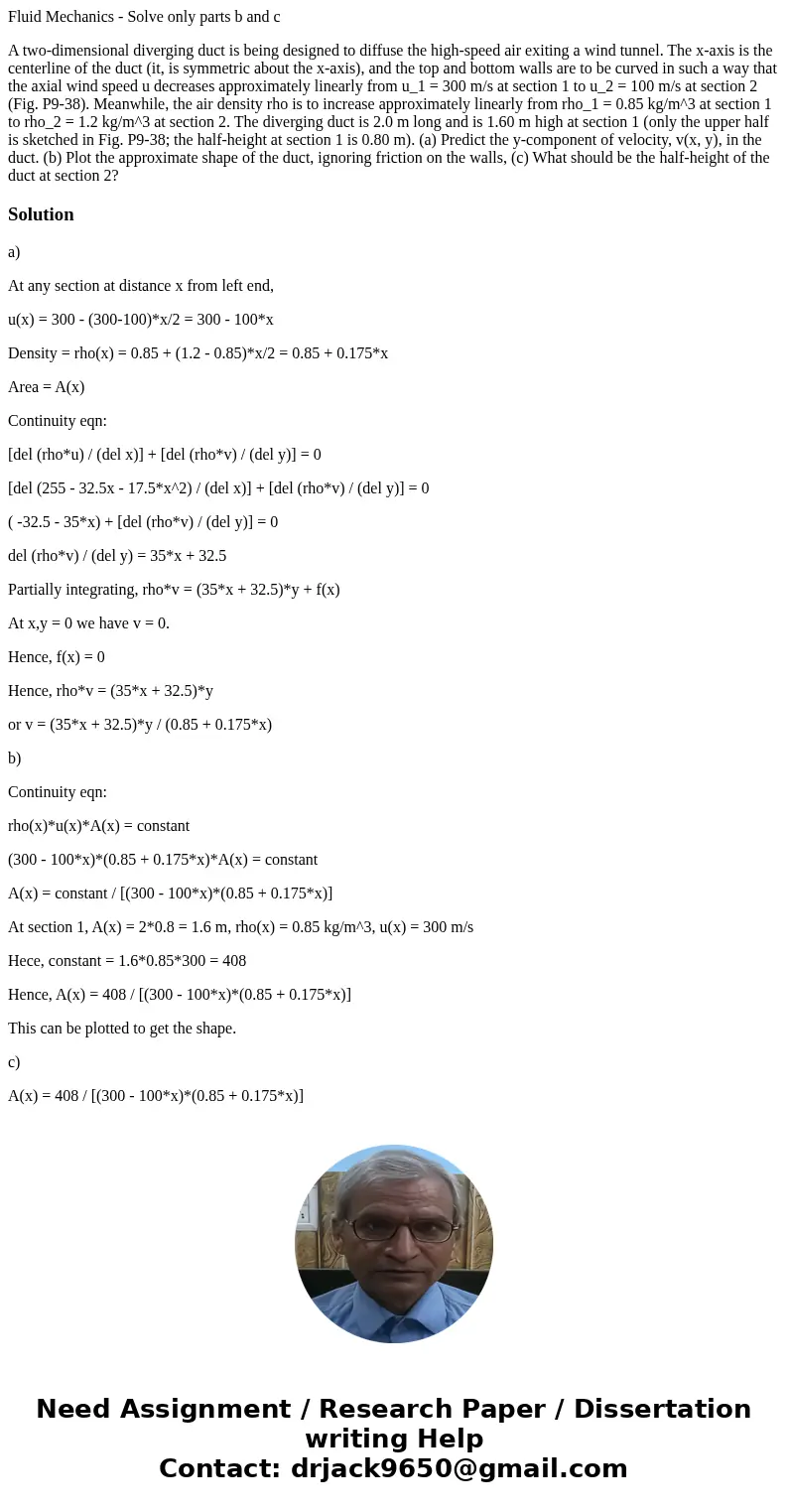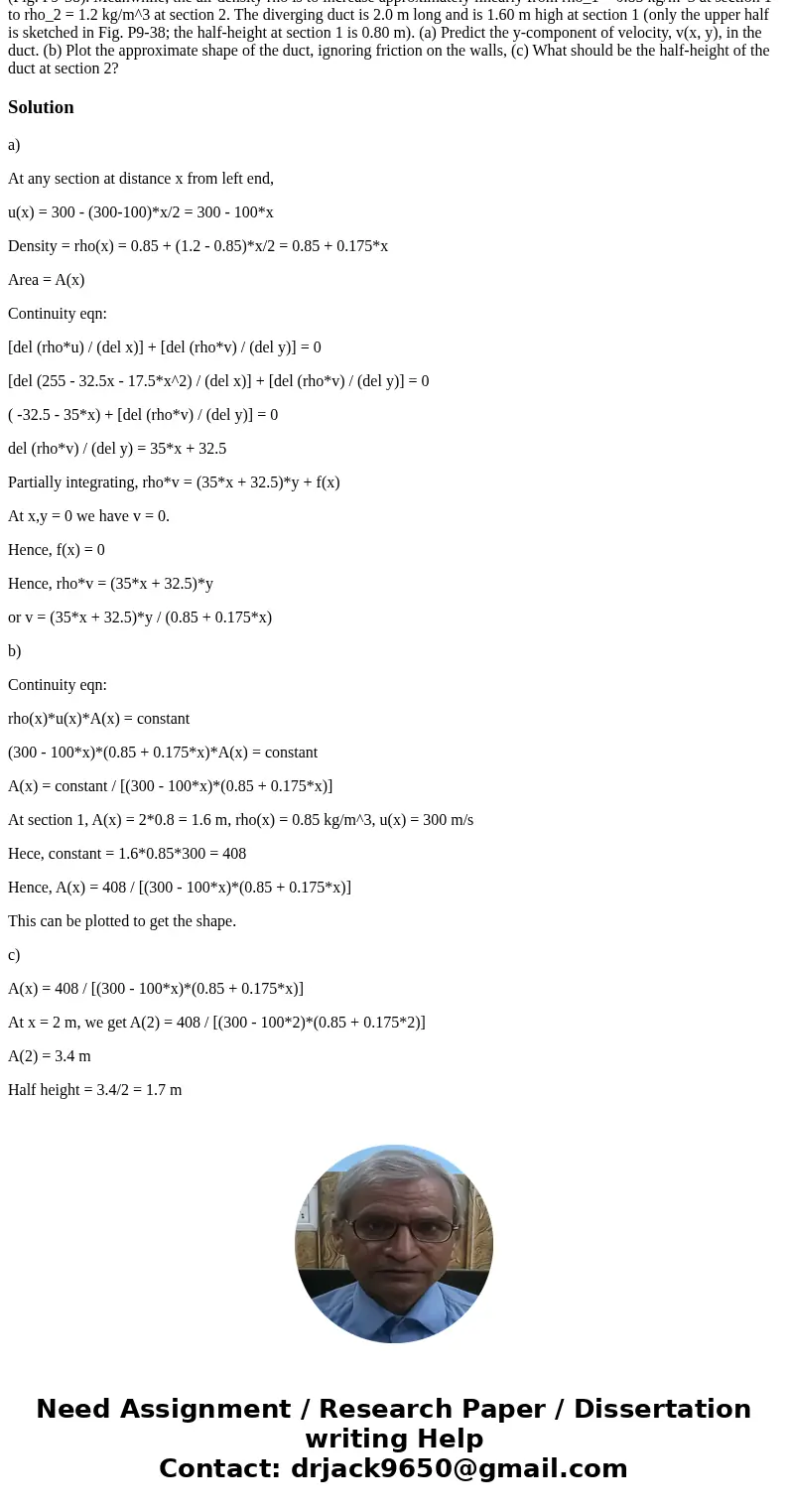Fluid Mechanics Solve only parts b and c A twodimensional d
Fluid Mechanics - Solve only parts b and c
A two-dimensional diverging duct is being designed to diffuse the high-speed air exiting a wind tunnel. The x-axis is the centerline of the duct (it, is symmetric about the x-axis), and the top and bottom walls are to be curved in such a way that the axial wind speed u decreases approximately linearly from u_1 = 300 m/s at section 1 to u_2 = 100 m/s at section 2 (Fig. P9-38). Meanwhile, the air density rho is to increase approximately linearly from rho_1 = 0.85 kg/m^3 at section 1 to rho_2 = 1.2 kg/m^3 at section 2. The diverging duct is 2.0 m long and is 1.60 m high at section 1 (only the upper half is sketched in Fig. P9-38; the half-height at section 1 is 0.80 m). (a) Predict the y-component of velocity, v(x, y), in the duct. (b) Plot the approximate shape of the duct, ignoring friction on the walls, (c) What should be the half-height of the duct at section 2?Solution
a)
At any section at distance x from left end,
u(x) = 300 - (300-100)*x/2 = 300 - 100*x
Density = rho(x) = 0.85 + (1.2 - 0.85)*x/2 = 0.85 + 0.175*x
Area = A(x)
Continuity eqn:
[del (rho*u) / (del x)] + [del (rho*v) / (del y)] = 0
[del (255 - 32.5x - 17.5*x^2) / (del x)] + [del (rho*v) / (del y)] = 0
( -32.5 - 35*x) + [del (rho*v) / (del y)] = 0
del (rho*v) / (del y) = 35*x + 32.5
Partially integrating, rho*v = (35*x + 32.5)*y + f(x)
At x,y = 0 we have v = 0.
Hence, f(x) = 0
Hence, rho*v = (35*x + 32.5)*y
or v = (35*x + 32.5)*y / (0.85 + 0.175*x)
b)
Continuity eqn:
rho(x)*u(x)*A(x) = constant
(300 - 100*x)*(0.85 + 0.175*x)*A(x) = constant
A(x) = constant / [(300 - 100*x)*(0.85 + 0.175*x)]
At section 1, A(x) = 2*0.8 = 1.6 m, rho(x) = 0.85 kg/m^3, u(x) = 300 m/s
Hece, constant = 1.6*0.85*300 = 408
Hence, A(x) = 408 / [(300 - 100*x)*(0.85 + 0.175*x)]
This can be plotted to get the shape.
c)
A(x) = 408 / [(300 - 100*x)*(0.85 + 0.175*x)]
At x = 2 m, we get A(2) = 408 / [(300 - 100*2)*(0.85 + 0.175*2)]
A(2) = 3.4 m
Half height = 3.4/2 = 1.7 m


 Homework Sourse
Homework Sourse